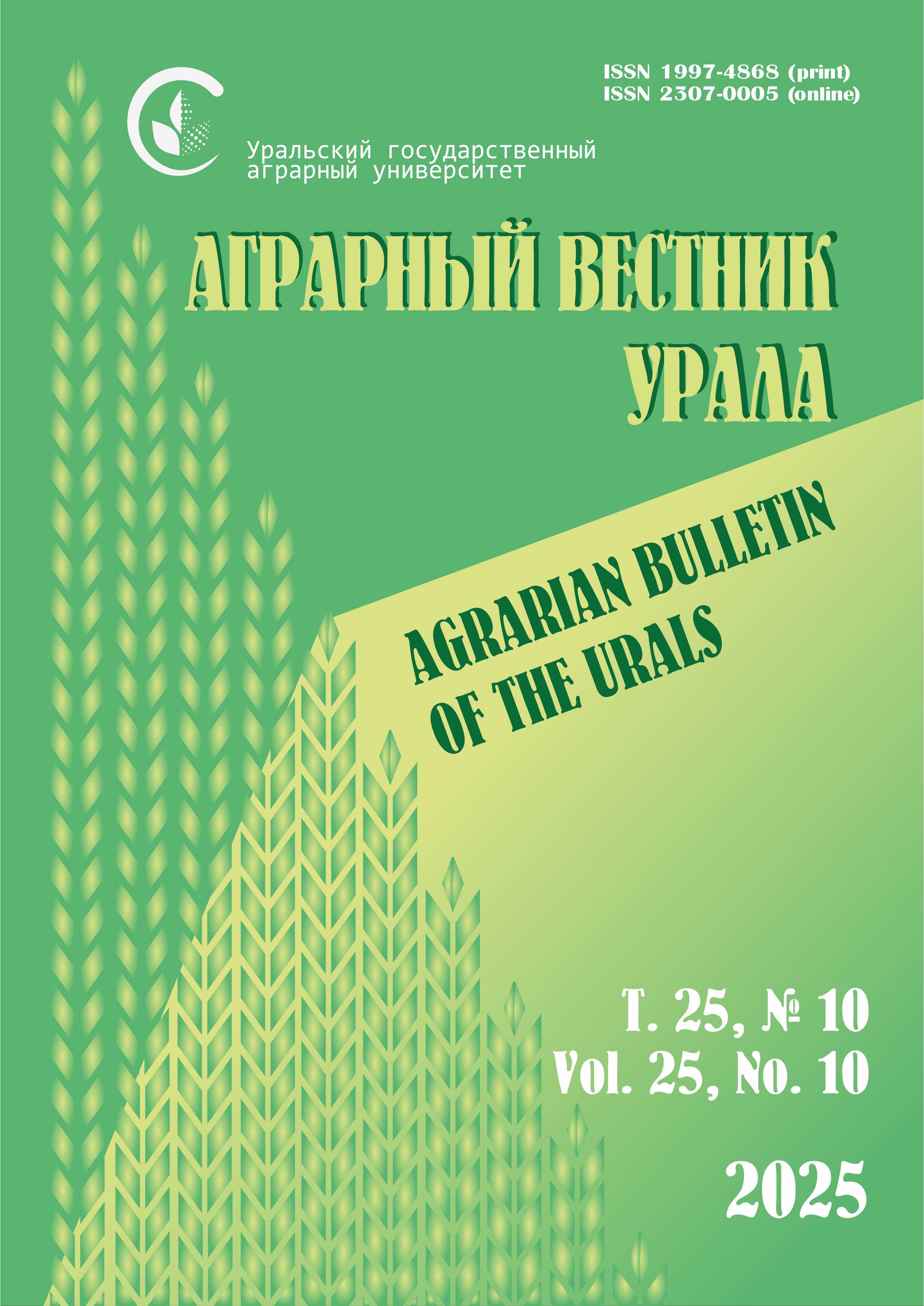Authors:
A. Yu. KEKALO, candidate of agricultural sciences, leading researcher,
E. V. NESTEROVA, candidate of agricultural sciences, leading researcher,
V. V. NEMCHENKO, doctor of agricultural sciences, professor, chief scientific employee,
Kurgan Research Institute of Agriculture (9 Lenina Str., 641325, Sadovoye, Ketovskiy district, Kurgan region)
Abstract. For operational protective measures against foliar diseases of spring wheat is important for their timely prediction. Most important in this case are the factors of heat and humidity of the growing season. The article presents the results of researches of influence of weather conditions the interphase periods of the growing season of spring wheat on development of leaf diseases under different sowing time in the Central zone of the Kurgan region. Positive correlation with precipitation and negative – with the average daily air temperature were established. The development of brown rust was in close linkage with the amount of precipitation and hydrothermal coefficient the interphase period out in the tube to the earing (r = 0.51). The development of powdery mildew intensified with increasing amount of precipitation and SCC in the period from the earing to the flowering (r = 0.54). When sown at different periods the influence of weather factors differed. The development of brown rust with late planting have increased with the increase in precipitation during periods from the tillering before flowering (r = from 0.44 to 0.81). Lowering the temperature had an impact on strengthening the development of the disease with early sowing date in the period prior flowering (r = -0.50), with late planting in the period from the shooting of the flag leaf (r = -0.52). The development of powdery mildew was in close positive dependence relationship with precipitation and negative with temperature in the time from tillering up to flag-leaf and from earing to the flowering, with late planting. This causes the maximal manifestation of the disease in these phases and at this sowing date. With early sowing of significant relationship of disease development rainfall and temperature are not set, the plants of spring wheat at this period had much less powdery mildew. The obtained data can be used to predict the development of the leaf diseases spring wheat.
Keywords: brown rust, powdery mildew, spring wheat, weather conditions, prediction of diseases, monitoring.
Download the full text of the article












